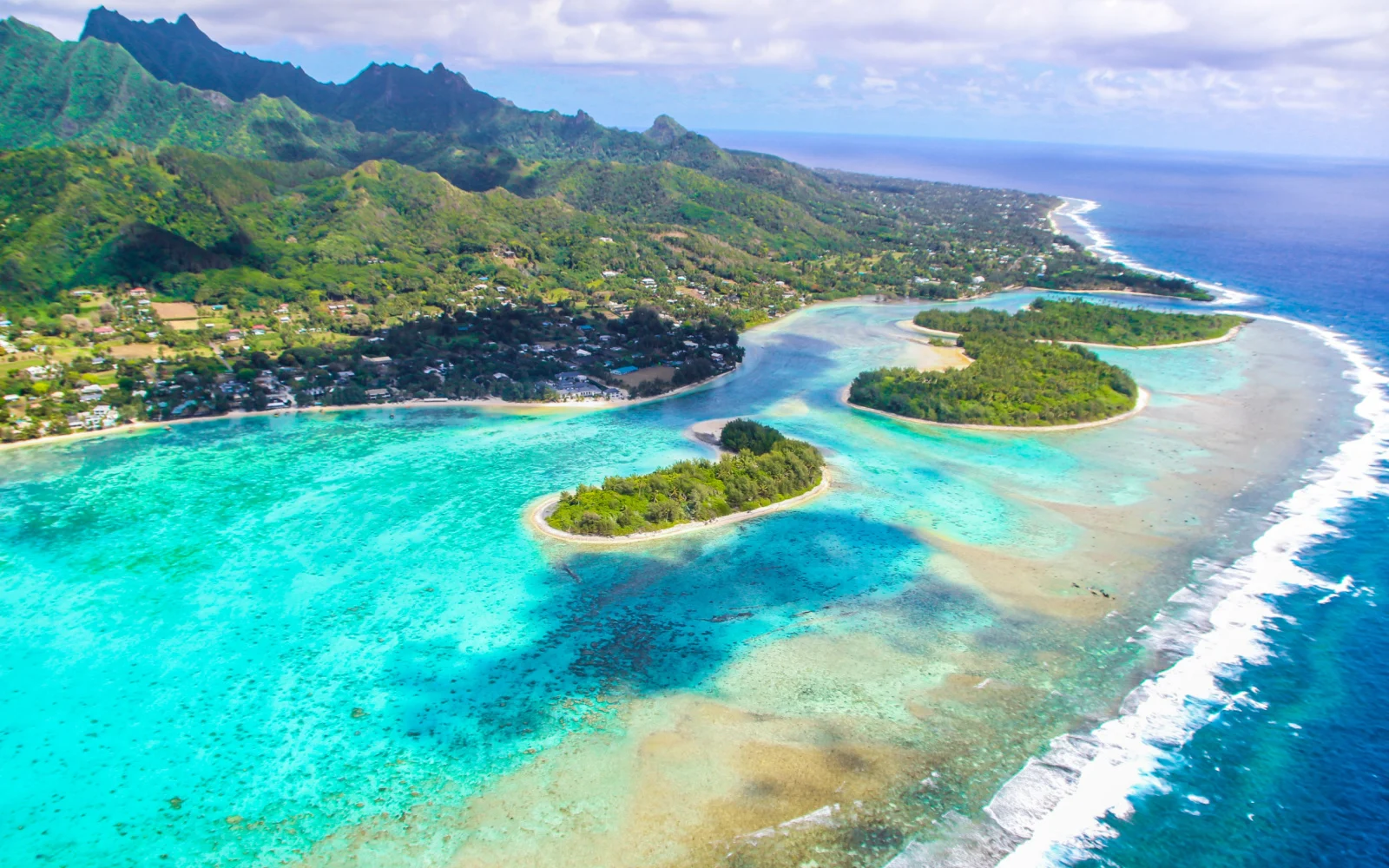What's the best time to visit the Cook Islands?
The best time to visit the Cook Islands is April to May and September to October, offering great weather, plenty of activities, and manageable tourist numbers. These shoulder seasons are perfect for water sports, nature hikes, and outdoor festivals, with comfortable temperatures and varied hotel rates. Despite slight seasonal price variations, the islands remain a serene getaway throughout the year.
Deep in the South Pacific, the peaks of long-extinct volcanoes emerge from the water as a chain of 15 beautifully lush islands — the Cook Islands. This secluded archipelago is the unspoiled jewel of Polynesia, and it’s even better to enjoy if you’re familiar with the best time to visit the Cook Islands.
Whether you’re interested in hiking and dining on Rarotonga, exploring caves and coral cliffs on Mangaia, or forgetting the modern world on pristine Aitutaki, the Cook Islands are spectacular for a laid-back vacation with beaches, rainforests, wildlife, and the promise of adventure.
There’s no such thing as a tourist trap in the Cook Islands — this is a place where palm trees are taller than the buildings, the resorts, shops, and restaurants are all local, and there’s not a single traffic light. It’s a less-complicated, more beautiful world in the Cook Islands.
We’ll take a look at the best time to visit the Cook Islands below, noting the overall best, cheapest, least busy, and worst times to go so you can plan your trip dates to perfectly align with your travel goals.
Overall Best Time to Visit the Cook Islands
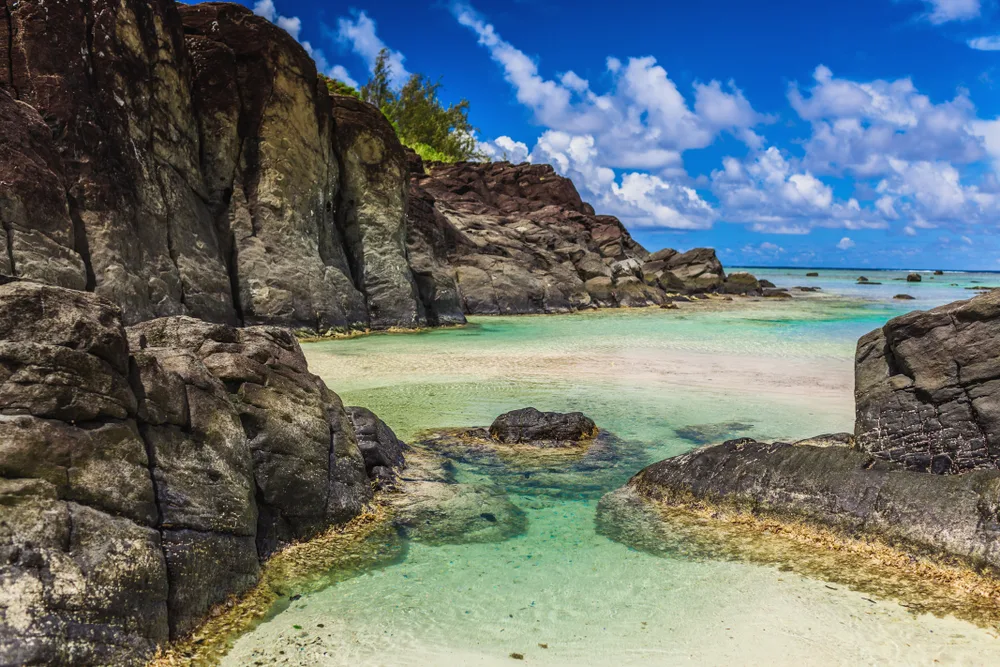
Martin Valigursky/Shutterstock
The best time to visit the Cook Islands is between April and May and September to October. These shoulder season months offer the best weather and an array of outdoor adventure options.
Since the Cook Islands sit in the Southern Hemisphere, April and May are part of the fall season, while September and October encompass the spring. Both periods are known for great weather in the Cook Islands and are the absolute best time to visit.
These months (usually May to November) represent the start and end of peak season in the Cook Islands. Things are quieter in April, but since the Cook Islands see under 95,000 tourists annually, crowds are never a big concern — even in the busiest months!
The weather in the Cook Islands is pretty stable year-round, but you’ll really appreciate the balmy highs in the upper 70s and low 80s during these shoulder season months. Rain is a little more common in April and May, but showers are typically short afternoon storms that pass quickly.
Weather highlights include:
- April: 75-83°F; 11 rainy days
- May: 72-80°F; 10 rainy days
- September: 69-78°F; 6-7 rainy days
- October: 71-79°F; 8 rainy days
May and October are part of the kitesurfing season in the Cook Islands with easterly trade winds blowing in. You can learn how to kitesurf in Rarotonga or Aitutaki’s beautiful lagoons. April, May, September, and October are great times for diving, snorkeling, kayaking, and sailing!
If you decide to come in September or October, you’ll be able to watch humpback whales from Rarotonga (a whale sanctuary) as they migrate into warmer waters on a journey from Antarctica.
But this entire shoulder season period creates the perfect opportunity for hiking rainforest and mountain trails, biking or riding a scooter around tiny Rarotonga to explore the scenery, swim with sea turtles in a lagoon, or take a 4WD off-road adventure inland.
Prices rise according to demand across the islands, as you can see in the Google Hotels data we’ve averaged to find hotel prices by night in April, May, September, and October:
- April: $256/night
- May: $244/night
- September: $289/night
- October: $270/night
These idyllic shoulder season months are packed with things to do and local festivals to check out. Here are a few annual events that should be on your radar:
- Te Mire Ura (Apr.-May) brings dancers from the Cook Islands to Rarotonga’s capital, Avarua, to show off their skills with entertaining traditional dances in colorful costumes
- Golden Oldies Rugby Mini Festival (May) is a 4-day Rarotonga festival as rugby enthusiasts come together to play the game, win prizes, and enjoy food, crafts, and performances
- Round Rarotonga Road Race (Sept.) is an annual race through Rarotonga’s mountains, coasts, and scenic trails with a 31km round-island run, fun run, costumed races, and relay races
Since September and October are drier than April and May, hotel prices are a little higher during these months. But for uninterrupted days at the beach or out exploring the rainforest and lagoons, you might appreciate the sunnier days in September and October.
Cheapest Time to Visit the Cook Islands
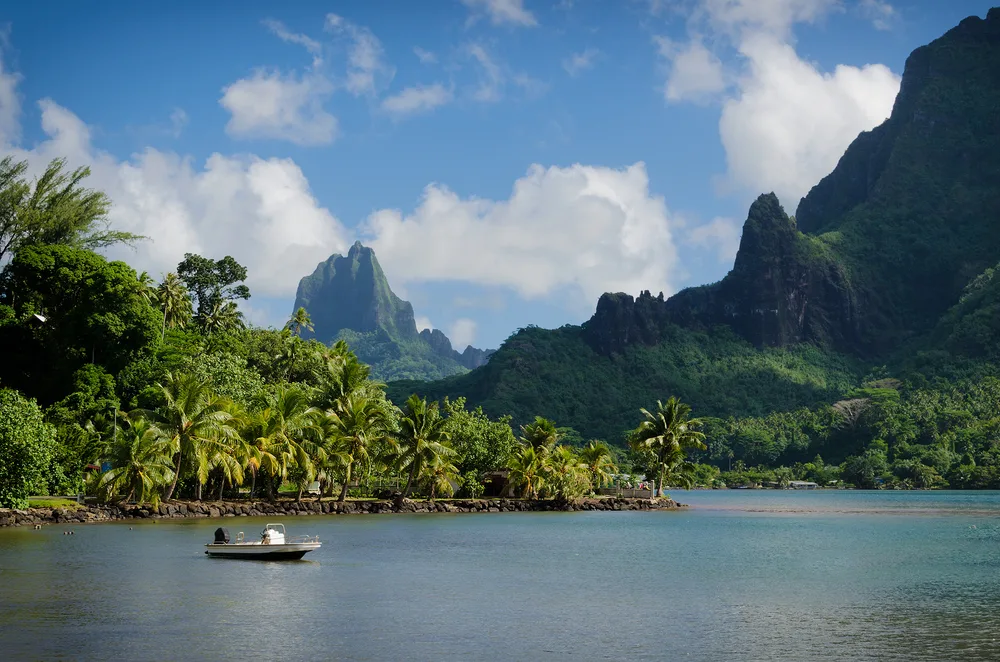
iPics/Shutterstock
The cheapest time to visit the Cook Islands is during June, July, and August. These are winter months in the Southern Hemisphere with balmy temperatures, dry weather, and great prices on hotels.
You’ll arrive to highs that don’t go beyond 78°F this time of year and very few rainy days to interrupt your plans of lounging on the beach, exploring Avarua on Rarotonga, or sailing around the islands to explore even more secluded shores.
- June: 70-78°F; 5-6 rainy days
- July: 69-77°F; 6 rainy days
- August: 69-77°F; 6 rainy days
More importantly, June through August is the cheapest time we’ve found to visit the Cook Islands and the perfect period to go if you’re watching your travel budget closely. Hotel prices hover around $200/night this time of year — a nice break from the higher prices of the bookend months (April-May and September-October) of the peak season.
- June: $176/night
- July: $226/night
- August: $198/night
As you can see in the average price per night (sourced from Google Hotels data) of accommodations around the Cook Islands, June offers the lowest prices on hotels overall. That makes it the perfect month to visit if you want to keep your lodging costs to a minimum.
In July and August, whale-watching season reaches its peak from the shores of Rarotonga as humpback whales migrate from Antarctica. You can book a whale-watching tour to get a closer look.
It’s a great time to try kitesurfing or head to Avarua’s bustling markets to browse local goods and produce while musicians play (great, lively atmosphere). Visit the Maire Nui Gardens on the southeast coast of Rarotonga to see exotic plants and eat at the onsite cafe.
Feel like you’ve seen it all on Rarotonga? Splurge on a flight over to nearby Aitutaki (40 minutes) to paddle board, snorkel, and swim in the beautiful turquoise lagoon.
You’ll get a feel for the South Pacific culture by checking out any of these events and festivals held in June, July, or August:
- Mangaia Bicentennial (Jun. 2024) celebrates the arrival of Christian missionaries to Mangaia 200 years ago with 10 days of events like parades, feasts, the unveiling of a new memorial stone, and more
- Te Maeva Nui (Jul.-Aug.) honors Constitution Day in the Cook Islands with scattered events around Rarotonga’s Punanga Nui Market and National Auditorium, a parade, huge dance competitions, and trade shows
- Manureva Aquafest (Aug.) draws skilled kitesurfers to the Cook Islands on Aitutaki’s lagoon to showcase their talent with kitesurfing, outrigger canoeing, swimming, and paddle boarding with an awards ceremony at the Manureva night market
Least Busy Time to Visit the Cook Islands
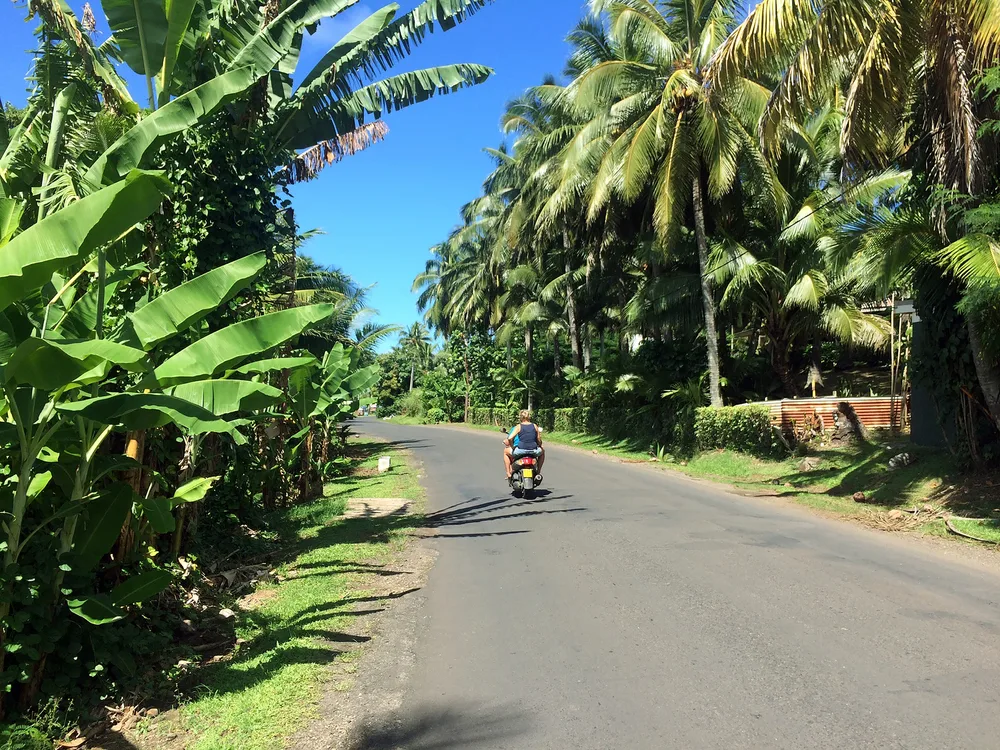
Sodapuretravel/Shutterstock
February through May is the least busy time to visit the Cook Islands. If you want to feel like you’ve got the islands to yourself, these months see the fewest visitors for a peaceful, tranquil vibe.
While the Cook Islands are more of a hidden gem that don’t see many visitors even in the peak season, the period from February to May is the quietest time for the islands and perfect if you’re looking for a serene experience that feels more authentic.
Covering the end of summer and the fall season, February through May represents a less-busy time in the Cook Islands because it sees the wrap-up of cyclone season (November to April) and plenty of rain (especially in February).
But the rains usually pass quickly, and lingering cloudy skies can make it pleasant to explore the interior rainforests and mountain trails. With highs in the low-to-mid 80s during this time, the short rains and clouds can offer a blissful cooling effect.
- February: 76-84°F; 13 rainy days
- March: 76-84°F; 11-12 rainy days
- April: 75-83°F; 11 rainy days
- May: 72-80°F; 10 rainy days
Taking a look at Google Hotels data for lodging options around Rarotonga, you can see that prices aren’t at their lowest during these months — in fact, some of the most expensive months (February and March) align with the least busy time to visit the Cook Islands:
- February: $293/night
- March: $333/night
- April: $256/night
- May: $244/night
Still, if you have to pay a little more to enjoy quiet beaches on the west and east coasts (especially Black Rock Beach and Nikao Beach) and secluded scenic trails without another tourist in sight, you’ll probably find it’s well worth it.
This is a prime time to snorkel and hike trails at the Aroa Marine Reserve in southwestern Rarotonga. Make it a real adventure by heading out to the Wreck of the Maitai, a 1900s shipwreck sitting in just a few feet of water off the coast of Rarotonga, to dive or see the ghostly ship!
Here’s a look at some of the events and festivals that take place between February and May across the Cook Islands:
- Te Mare Atu (Mar.) is a local songwriter competition held at Rarotonga’s National Audtorium, as people from the Cook Islands come to showcase their best traditional-style songs and compositions in a bid for the top prize
- Aitutaki Marathon Pursuit in Paradise (Apr.) happens on Aitutaki with a heart-pumping 42.2km race along the island’s beautiful, unspoiled coastline
- Air New Zealand Rarotonga Triathlon Festival (May) brings competitive athletes ready to swim, run, and bike in the scenic setting of Rarotonga with an awards dinner, festive celebrations for each leg of the race, and an island BBQ for everyone
This is the perfect time to visit the Maori Te Vara Nui Village to eat local cuisine and see traditional dances and performances on floating stages surrounded by waterfalls, lush gardens, and local craft and artwork shops.
Check out the open-air Punanga Nui Market to further immerse yourself in the local culture, head out on a fishing charter, or go inland to explore and see the Maori Stonehenge in Happy Valley or Wigmore’s Waterfall in the south.
Worst Time to Visit the Cook Islands
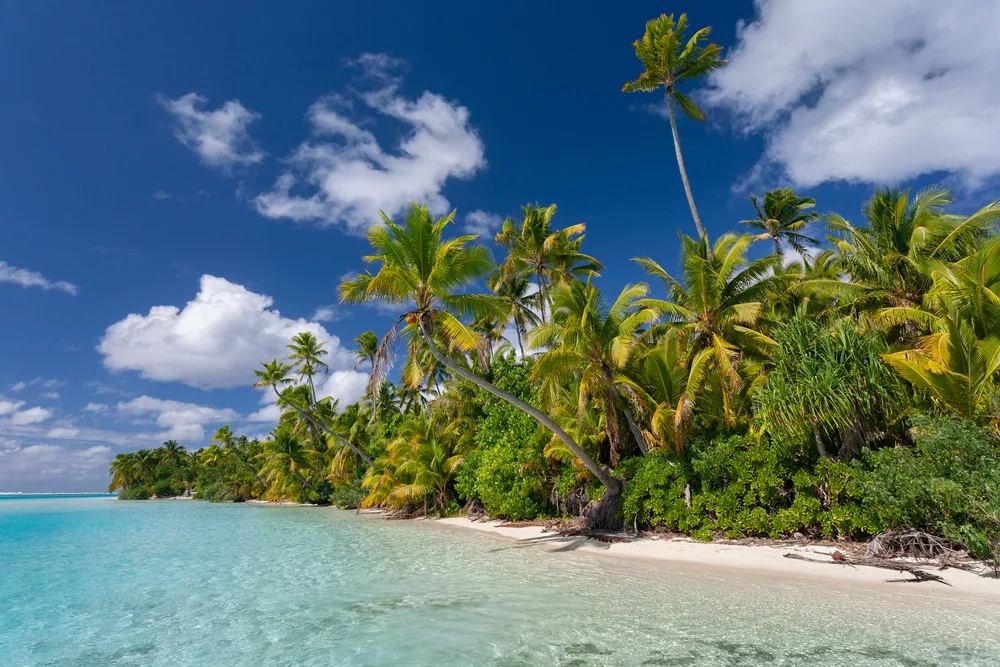
Steve Allen/Shutterstock
The worst time to visit the Cook Islands is from December to March, when the summer cyclone season’s heat, rain, and humidity make for a less satisfying visit.
November through April is the cyclone season for the Cook Islands, but most of the storms are concentrated in the stormy summer months from December to March. Since 1820, about 29% of cyclones that affect the Cook Islands — and 46% of cyclones that reach hurricane status — have occurred in the month of February.
It’s not just February that can be a drag in the Cook Islands. December, January, and March receive about the same amount of rain as February (11-13 rainy days each month) and the chance of cyclones is elevated during this entire period. High humidity makes conditions sticky and less comfortable during these months.
- December: 74-82°F; 11 rainy days
- January: 76-84°F; 13 rainy days
- February: 76-84°F; 13 rainy days
- March: 76-84°F; 11-12 rainy days
You can’t even look forward to rock-bottom pricing at hotels across the Cook Islands during this less-than-ideal time to visit. When we analyzed and averaged hotel price data from Google Hotels, we found that the price per night was actually at its peak during this period!
- December: $247/night
- January: $293/night
- February: $293/night
- March: $333/night
Crowds can increase in late December and early January around the holidays, while spring break and Easter can bring a sudden influx of people to the islands in March. You’ll also find very few events and festivals happening during this time outside of Christmas, New Year’s Eve, and Easter celebrations.
There are better times to visit the Cook Islands if you’re looking for dry weather, lots of things to do, affordable prices, and small crowds. If you can, avoid visiting between December and March.
Frequently Asked Questions
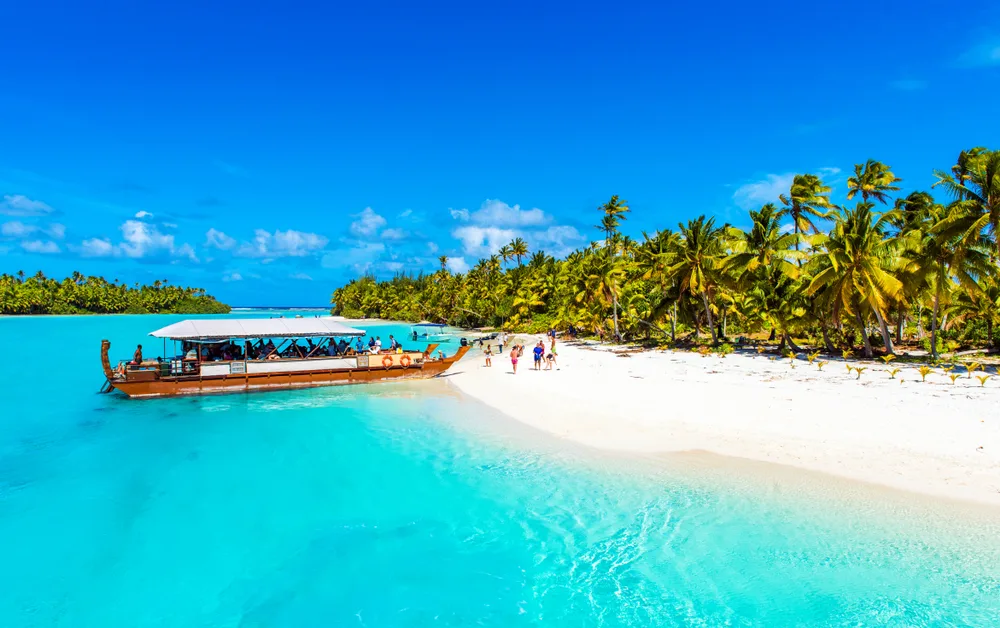
gg-foto/Shutterstock
Get prepared for your upcoming trip to the Cook Islands by reading through other travelers’ most frequently asked questions below!
What is the rainy season in the Cook Islands?
Summer, from December to March/April, is the rainy cyclone season in the Cook Islands. These months experience about 11-13 rainy days on average, making it harder to enjoy outdoor activities. Showers may be short, but cloudy skies are normal this time of year in the Cook Islands.
Are the Cook Islands better than Fiji?
Fiji is nice, but expensive and many travelers prefer the secluded, more authentic feel of the Cook Islands. Rarotonga has the most amenities, but still feels very natural and doesn’t even have a stoplight! The more remote and unspoiled Cook Islands, like Aitutaki, are even less developed.
How many days do you need in the Cook Islands?
You need at least 7-10 days in the Cook Islands, given their remote location (about 4 hours to fly from Auckland, NZ) and expansive options for outdoor recreation and exploration. You can spend your whole trip on Rarotonga or venture further out to the more secluded islands for a unique experience.
What is cyclone season in the Cook Islands?
Cyclone season lasts from November to March or April in the Cook Islands, coinciding with the spring and summer seasons. Historically, February sees the most cyclones in the Cook Islands and tends to be the month with the most cyclones that turn into hurricanes.
Is it safe to swim in the Cook Islands?
Yes, it’s safe to swim in the Cook Islands, but some beaches and passages from the shore to the ocean (especially on the southern coast) have stronger currents and waves that make swimming safely more challenging. These passages are marked with swim warnings.
So, What’s the Best Time to Visit the Cook Islands?
The best time to visit the Cook Islands is between April and May or from September to October. These shoulder-season months offer blissful weather to enjoy the beaches, trails, snorkeling, inland tours, and bustling towns and villages.
If you’re on a budget, plan between June and August to save the most money. Hotels cost around $200/night on average during this time.
The islands are nice and quiet from February through May for a less-crowded visit. December through March encompasses part of the cyclone season and tends to be quite wet, so you’re better off avoiding a visit during these humid summer months.
Overall, the best time to visit the Cook Islands is when your travel dates align with the goals you’ve set for the trip!
Whether that’s enjoying the best of the islands, saving money, or avoiding crowds, taking time to research the right time to go will set you up for an amazing time in the Cook Islands. Happy travels!



